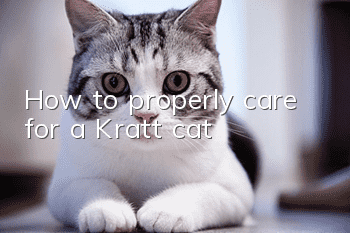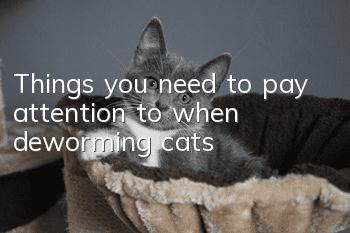How to properly care for a Kratt cat?

Trim claws: Cat claws are tools used by cats to catch mice, climb and defend themselves. If the owner keeps a cat to hunt mice, of course, the claws cannot be trimmed.
If you keep a cat as a companion animal, you should trim the cat's claws frequently to avoid scratching people and damaging clothes, furniture, floors, etc. Claws should be trimmed from an early age, once a month or so. The specific methods are as follows:
Hold the Kratt cat in your arms, grab one of the cat's feet with your left hand, and squeeze it slightly with your thumb, index finger, and middle finger to extend the paw. Then hold the nail clipper with your right hand, carefully cut off the transparent part of the front end of the claw, and then use the small file on the nail clipper to polish the claw. When pruning, do not cut too much to avoid injuring the Kratt cat's feet. Then cut off and polish the other claws in turn.
Bathing regularly: Bathing a Kratt cat can not only keep the cat clean and beautiful, but it can also remove some parasites on the body surface, promote blood circulation and metabolism, and play a role in disease prevention and fitness. effect.
It is best to cultivate the habit of bathing from an early age. Cats will be extremely reluctant to bathe their cats until they are adults. Before taking a bath, you should prepare bathing utensils, such as bathtub, bath towel, detergent, comb (preferably sparse at one end and dense at the other), brush, etc. When taking a bath, the water temperature should not be too low or too high, so as not to scald your hands; the detergent used should not be too irritating to avoid irritating the skin; the Kratt cat's coat should be combed before taking a bath to prevent tangles; bathing movements Wash it as quickly as possible; after washing, dry it with a bath towel immediately. When the temperature is low, it is best to cover it with a special towel or other warm items to prevent colds.
Grooming: The tongue of the Kratt cat is rough and has special barbed tongue papillae, which is like a comb. The Kratt cat often uses tongue licking to comb its coat. Use paws to comb parts that cannot be licked, such as the head, shoulders, back, neck, etc. Even so, it's best to groom your cat once a day. Because cats shed their hair all year round, especially during the molting seasons of spring and autumn, cats will swallow the hair into their stomachs when grooming themselves, forming hair balls in the stomach over time. If it cannot be spit out through vomiting and cannot be expelled through the intestines in time and stays in the stomach, it will form hair ball blockage, affect appetite, and even endanger life.
When combing, not only comb along the hair, but also against the hair. When combing a Krat cat, you can first wet the coat with water and then rub it to make the coat stand up for easy combing. If the coat of a Kratt cat becomes tangled or stuck together, you can use your fingertips to untangle it, or use a sparse-toothed comb to comb it slowly and carefully. If the felt has been rolled, you can use scissors to cut the felt into thin strips along the growth direction of the hair, and then comb it with a comb. If the felting is severe, the coat can be cut off to makeIt grows again.
Eye care: Healthy Kratt cats have bright and energetic eyes. When Kratt cats are sick or in poor health, they often become afraid of light and shed tears. In some cat breeds, the nasolacrimal ducts are easily blocked and cause tears. Cats shed excessive tears and often have eye feces in the corners of their noses. You can use absorbent cotton dipped in 2% boric acid aqueous solution and gently scrub it away.
Ear care: Care for Kratt cats’ ears mainly involves removing earwax. Use a 75% alcohol cotton ball to disinfect the external ear canal, then dip the cotton swab in olive oil or edible vegetable oil to soak the dry earwax. After it softens, use tweezers to carefully remove the earwax without breaking the mucous membrane of the ear canal. Prevent infection and pus. Once the cat's external auditory canal is infected and suppurative, you can use a cotton swab dipped in hydrogen peroxide to scrub gently, and scrub repeatedly until there is no trace of pus on the cotton swab, and then use absorbent cotton to absorb the hydrogen peroxide in the ear canal. The infection can be cured with a few scrubs. If the cat has too much earwax and the cat shakes its head and scratches its ears, it should be consulted by a veterinarian in time.
- Does a cat want its owner to accompany it before it dies?
- Cat vomited and stopped eating after changing cat food
- How to quickly make a cat trust its new owner
- Can cats suffer from asthma like people?
- What causes idiopathic cystitis in cats and how should it be treated?
- The cat suddenly convulsed and ran around
- Does a female cat meow when she's in heat?
- Why are the ears of a 2-month-old kitten dirty?
- Why do cats pee randomly? How to correct this habit?
- Why do cats purr?



